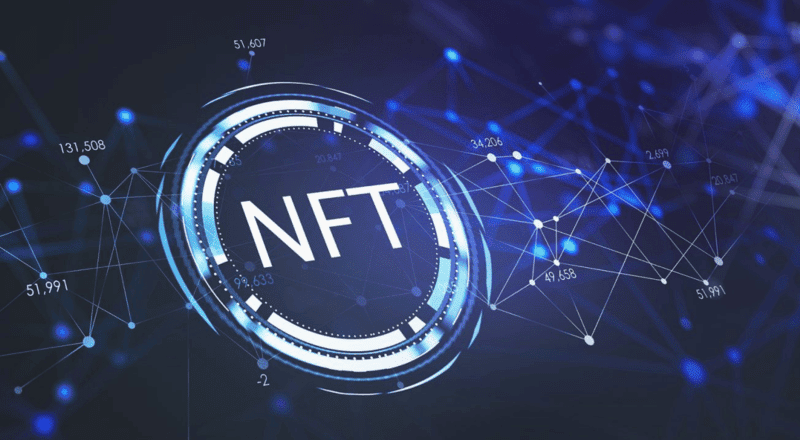12/09/2022 NFT Markets That Ban Royalties Face Growing Backlash From Creators

Royalty payments have become a cornerstone of the burgeoningnon-fungible token (NFT)industry, allowing artists to profit when their work is resold, venues to profit from secondary markets for NFT tickets, and artists to abandon streaming services in favor of more lucrative, blockchain-driven products.
A Paradigm Shift in NFT Markets
Artists relied on royalties from future work sales to support themselves for a long time. Unfortunately, this has not proven easy in industries dominated by studios, publishers, agencies, and talent managers. Numerous examples of artists were compelled to file lawsuits to obtain justice. Aversano delivered a speech about his introduction to cryptocurrency while hiding from the audience, the DJ, and gallery employees in a back room.
Aversano claims that the presence of royalties initially drew him to NFTs. This technology advanced the concept of artists supporting themselves through royalties and said that it is a paradigm shift. Artists were promised a convenient digital instrument for quickly and painlessly collecting their repayments with the introduction of non-fungible tokens.
However, because of smart contracts, creators can anticipate receiving consistent and predictable remuneration for their labor more quickly than in the past.
X2Y2 Royalty-free Competitor
Sudoswap, a fast-growing royalty-free competitor, made royalty payments on August 26 in response to NFT MarketplaceX2Y2’s Alternativeciting competition. It stands to reason that the number of buyers on a royalties-paying payment site will drop from 96% to 88% in the coming week.
As a result of the pushback, the cast was partially overturned. Its actions, however, astounded artists who thought royalties were more like a glorified tip jar than a paradigm.
According to NFTGO data, X2Y2 was the most active NFT market by volume over the past week. It functions similarly to LooksRare, rewarding users for making purchases on the platform with its cryptocurrency. Even though creator-imposed royalties are discretionary, a 0.5% marketplace fee is nevertheless assessed.
Twitter users who are invested in NFTs reacted negatively to X2Y2’s statement, with many JPEG fans stating that removing royalty payments would be detrimental to the artists and producers who originally resorted to NFTs because they offered a higher profit margin.
Even X2Y2 conceded that it would be bad for business if purchasers routinely set creator royalties to zero. Instead, the marketplace announced in a Saturday update that, in response to the criticism, it would require customers to pay creator royalties on selling unique collectibles.
Holders Only Voting System
The marketplace is also instituting a “holders only” voting system whereby holders can collectively vote whether or not to permit royalties for particular collections. Since X2Y2’s policy shift, two out of fourteen Mutant Ape Yacht Club purchasers have reimbursed the project’s inventor and arguably industry leader Yuga Labs with royalty payments.
Amber Vittoria, a New York-based artist, stated on Twitter, “Ignoring a manufacturer’s royalties is an old and regressive practice. If this becomes the norm, I’m done with web3.” Other artists, in addition to Aversano, welcomed the prospect of royalties backed by NFT.
On a panel discussion moderated by X2Y2 on September 2, various musicians discussed the importance of royalties in luring them and their colleagues to blockchain technology.Wacky told The Defiant that some artists have explored blocking sites where consumers can avoid paying royalties.
The creators of theDeGods NFTcollection on the Solana blockchain have said that customers who fail to pay royalties would not be eligible for any future airdrops or other benefits associated with owning a DeGod NFT. Further, the “entire royalty fight” will alter the NFT scene. As a result, the arts community may feel the effects of this.
On the other hand, it may “bring about a spate of extremely competitive creators,” all of whom would work tirelessly to get “quite trustworthy and devoted clients” eager to pay royalties and thereby improve the NFT artistic landscape.
ThePotentialforSeriousRepercussions
For NFT creatures, to prevent losing out on these fees, collections will begin to ban some marketplaces in their code. This will end the age of open marketplace competition that has benefited the industry’s growth over the previous two years. The way projects seek to make money may shift as people’s perspectives about fees shift.
For instance, due to the recent slump in the NFT market, reducing mint prices and increasing royalty fees have been common practices. This shift encourages project teams to maintain community engagement to generate revenue rather than cash out all at once.
Most notably, the Goblin-town project issued NFTs that were free to mint but came with a high 10% royalty fee on every secondary sale. Truth Labs, the original team behind the project, said on Thursday that they would start a special marketplace for Goblin NFTs where the royalty fee for second-hand sales would be cut from 10% to 5%.
 (0)
(0)
 (0)
(0)
